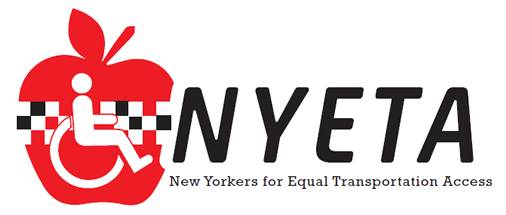PDF Format: uber-needs-to-get-on-board-to-ensure-passenger-safety
By Brad Gerstman, Commentary
Published 5:51 pm, Monday, January 2, 2017
One of the major objections to the proposal to allow ride-hailing services like Uber to expand to upstate New York is that it does not include fingerprinting of drivers, although it’s already required of all taxi operators in New York City — including Uber. Outside the city, ride-hailing firms conduct private driver screenings — underscoring how these app-based services, even though acting as public conveyances, believe their business should be shielded from regulators.
Their resistance is playing out all over the country — to the point that they abandoned Austin, Texas, rather than have their drivers submit to public screenings.
Brad Gerstman, of Roslyn, is the spokesman for New Yorkers for Equal Transportation Access.
Proponents of fingerprinting — concerned when random, undocumented, drivers flood the roads — question why there should be a disparity between New York City and the rest of the state. They are right, as far as this goes. But the critics, rightly concerned about passenger safety, are missing a very important point: fingerprinting is not sufficient to protect Uber and Lyft passengers — as we have seen in the city.
In NYC, all taxis are equipped with a sophisticated on-board computer monitoring system called T-PEP. This system allows the Taxi & Limousine Commission to rapidly identify drivers when an incident impacting passenger safety occurs. The ride-hailing companies are not connected to the system, and when a report of driver assault or sexual harassment is reported, Uber in particular not only refuses to divulge any data to the regulatory authority, it also stonewalls police.
When passengers — mostly women — are assaulted by Uber drivers, the victims are confronted by a wall of silence. Take Abbey Thomas — a Uber customer whose loyalty has been breached by her treatment, not only by the Uber driver she was unfortunate to be picked up by one summer evening, but by the company itself, whose reaction to these kinds of incidents adds grievous insult to injury.
Abbey was dragged a full block by an Uber driver and forced to go to the emergency room to get treatment for her injuries. Yet, according to a Gothamist report, “Uber allegedly did nothing to help police track down the crazed hack.” Police were “deliberately denied access to critical identifying information,” like the driver’s full name, license plate and address, according to a lawsuit.
An art gallery manager, Frances Stern, was taken — abducted is probably a better word — on a wild ride to the Bronx instead of to her Upper East Side apartment. Despite her cries that he was going the wrong way, the driver continued his frightening ride. Stern tried calling 911, and finally, at a stoplight, bailed out, the Daily News reports.
Like Abbey Thomas, Stern has had to deal with Uber stonewalling.
Currently, the TLC is trying to promulgate fatigue rules that would remove tired drivers from the road. That’s easily accomplished for taxis that are monitored, and a cab’s system can be immediately shut down when the hour limitations are reached. But it’s almost impossible for e-hail drivers, since the agency must rely on the goodwill and accuracy of a company that loves to hide the ball.
Uber, a company that refuses to cooperate with police without a search warrant, is fighting the rule in the name of — get this — “sensitive passenger information.”
Abbey Thomas and Frances Stern are just the tip of the safety iceberg. It’s such a big problem that an entire warning website has been created that catalogs dangerous passenger experiences with these companies all over the country. (http://tinyurl.com/j4czbkh)
Before any legislative green light for the Ubers of the world is given, at the very least a fingerprinting requirement — one that would create a database of drivers to inform law enforcement — must be made integral to the law. In the best of all possible worlds, however, these cars for hire would all be equipped with T-PEP systems so that these drivers would be properly monitored to ensure passenger safety.
PDF Format here: uber-needs-to-get-on-board-to-ensure-passenger-safety


Recent Comments